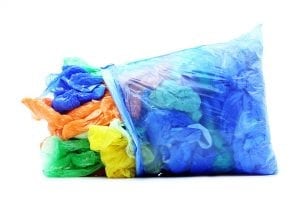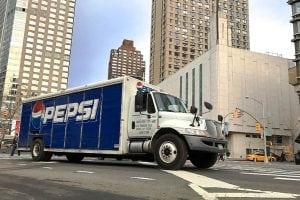 Some beverage brand owners are moving toward 100 percent RPET bottles, but one of the country’s largest PET reclaimers says the magic number may be half that amount.
Some beverage brand owners are moving toward 100 percent RPET bottles, but one of the country’s largest PET reclaimers says the magic number may be half that amount.

 Some beverage brand owners are moving toward 100 percent RPET bottles, but one of the country’s largest PET reclaimers says the magic number may be half that amount.
Some beverage brand owners are moving toward 100 percent RPET bottles, but one of the country’s largest PET reclaimers says the magic number may be half that amount.
A German manufacturer of electronics and appliances reported it is using recycled plastics, including nylon from fishing nets, in a number of products.
This story has been corrected.
 California legislation requiring 20 percent recycled content in PET bottles failed. Meanwhile, state lawmakers passed a number of other plastic and recycling-related bills before adjourning.
California legislation requiring 20 percent recycled content in PET bottles failed. Meanwhile, state lawmakers passed a number of other plastic and recycling-related bills before adjourning.
 Fiberon, a major end user for recovered PE, will be purchased by a publicly traded company that owns prominent home and security product brands.
Fiberon, a major end user for recovered PE, will be purchased by a publicly traded company that owns prominent home and security product brands.
 Recycled plastic yarn manufacturer Unifi saw an increase in sales last year, including stronger demand for its recycled flake and chip. But higher PET bale prices cut into profits.
Recycled plastic yarn manufacturer Unifi saw an increase in sales last year, including stronger demand for its recycled flake and chip. But higher PET bale prices cut into profits.
 The world’s largest e-commerce company will pay $1.5 million to settle allegations it broke California law on the marketing of plastics as “biodegradable” or “compostable.”
The world’s largest e-commerce company will pay $1.5 million to settle allegations it broke California law on the marketing of plastics as “biodegradable” or “compostable.”
 Low-cost recovered PE film continues to drive record profits for Trex, which uses hundreds of millions of pounds of the plastic in its composite lumber products each year.
Low-cost recovered PE film continues to drive record profits for Trex, which uses hundreds of millions of pounds of the plastic in its composite lumber products each year.
 Depolymerization company Loop Industries has signed a letter of intent to supply recycled PET to beauty products giant L’Oréal.
Depolymerization company Loop Industries has signed a letter of intent to supply recycled PET to beauty products giant L’Oréal.
 PepsiCo has scaled up its commitment to The Recycling Partnership, and a leader at the beverage company says the money will be geared toward improving local programs.
PepsiCo has scaled up its commitment to The Recycling Partnership, and a leader at the beverage company says the money will be geared toward improving local programs.
 The Closed Loop Fund will provide millions of dollars to help scale up a PP recycling technology in Ohio.
The Closed Loop Fund will provide millions of dollars to help scale up a PP recycling technology in Ohio.
